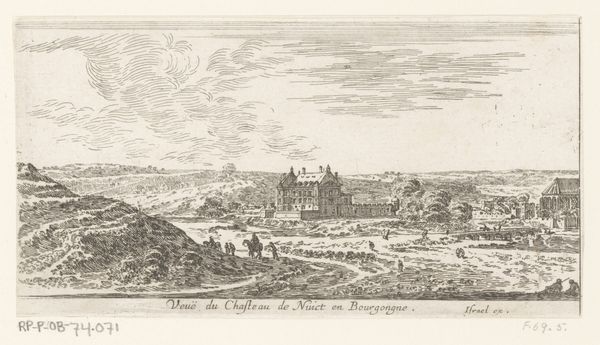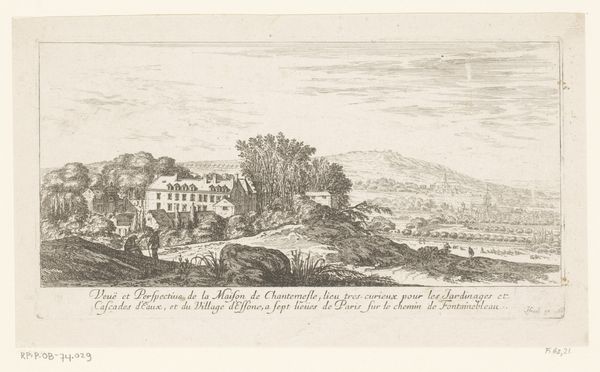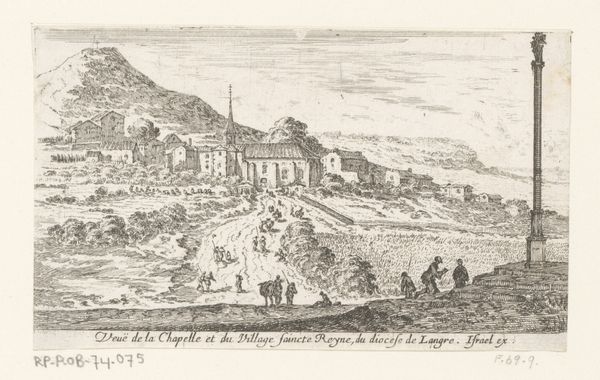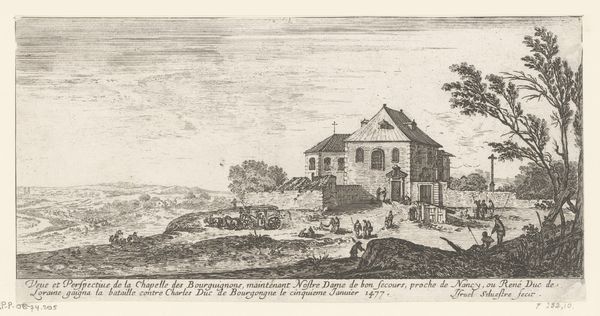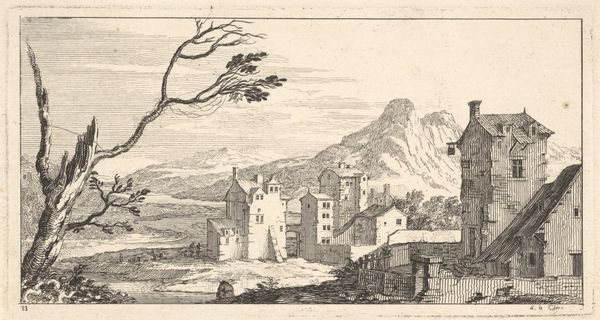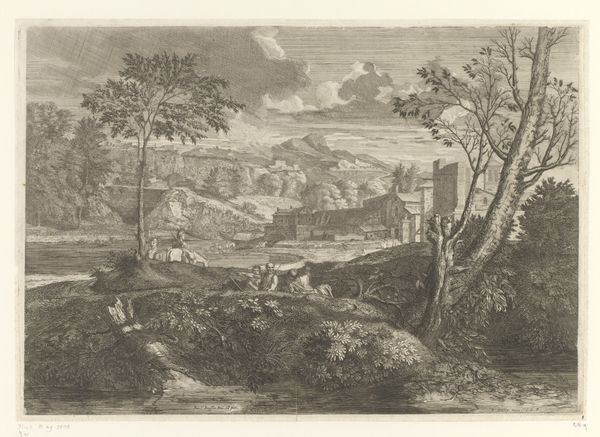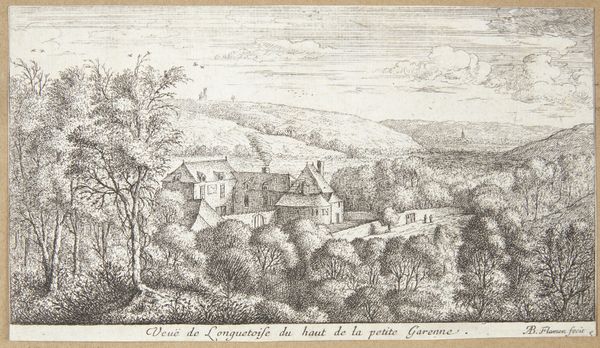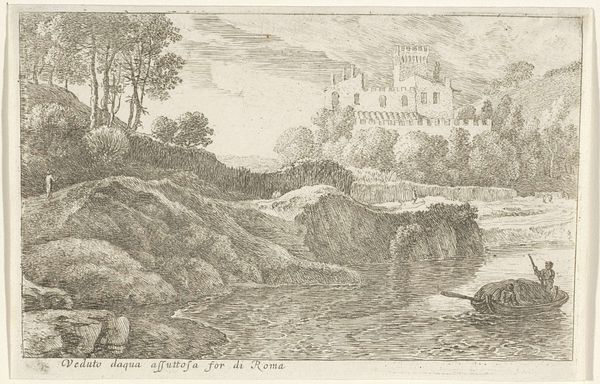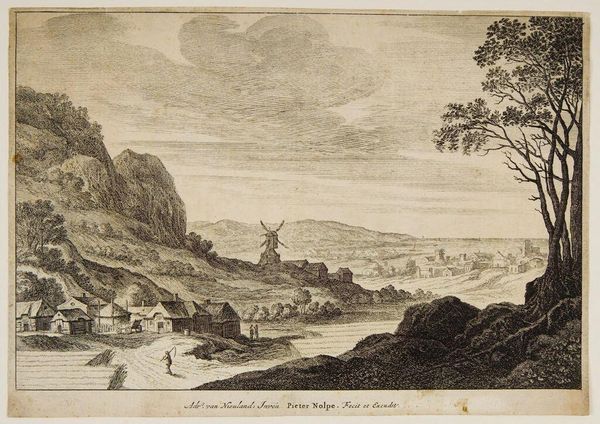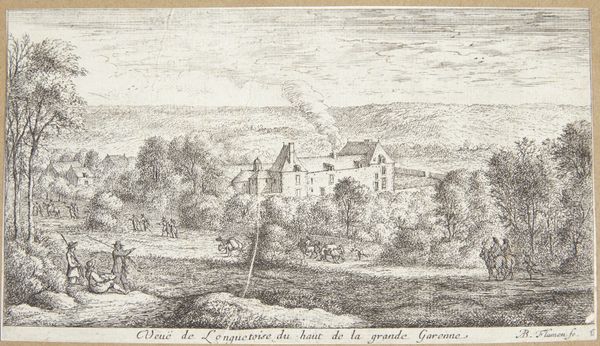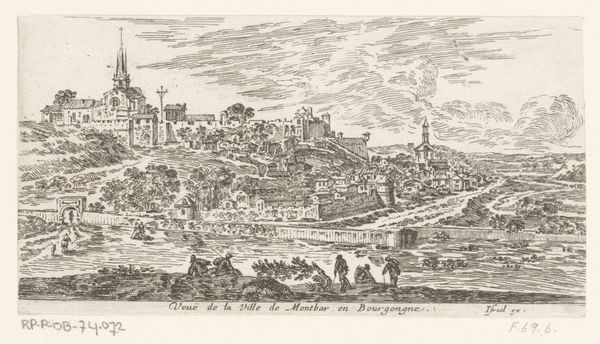
etching
#
baroque
#
etching
#
landscape
#
etching
#
cityscape
Dimensions: height 77 mm, width 129 mm
Copyright: Rijks Museum: Open Domain
Curator: Looking at "View of an Abbey near Tonnerre," dating roughly between 1631 and 1661, an etching by Israel Silvestre, my first thought is that this image breathes solitude, a pastoral ideal that probably comforted someone at a certain place and time. Editor: Interesting. My eye is immediately drawn to the technique. Look at the density of etched lines used to create form and shadow! You can almost feel the plate making its mark. Etching at this time, think of the craftsmanship required to render such a complex landscape! Curator: Indeed. Landscape as a genre during this time period became a vehicle, really, for expressing not just an appreciation for nature, but also specific societal values. This particular abbey is visually harmonious and functional and exists nestled peacefully within nature. It embodies a certain cultivated ideal. Editor: It's interesting to think about how the act of etching and the dissemination of these images through printmaking democratized art in some ways. Silvestre wasn't just creating a single masterpiece; he was facilitating the mass production and circulation of imagery, transforming the consumption of art in early modern Europe. These images then become signifiers of identity, and wealth in their distribution. Curator: Certainly. Prints like these catered to a growing urban audience who appreciated views of the countryside and picturesque architecture. And it gave visual currency to notions about France, and identity formation linked with locality. The artist as businessman as promoter! The rise of nationalism starts in locations exactly like these depicted! Editor: Right! Also consider the materials themselves: the paper, the ink, the etching needle, and acid. The relationship between the maker, his tools, and materials defines so much of art history. It highlights how ingenuity and the act of producing are fundamentally linked in society. How luxury meets mass production! Curator: Precisely. Seeing this, one is compelled to understand its social history and think about art's broader impact. Now I really admire Silvestre’s ability to merge social commentary with technical prowess in service of emerging social themes. Editor: And it’s worth recognizing the artist's use of reproducible means as vital for broader understanding of society during Silvestre's period. They illuminate our shared human ability to shape materials for broader societal needs.
Comments
No comments
Be the first to comment and join the conversation on the ultimate creative platform.
